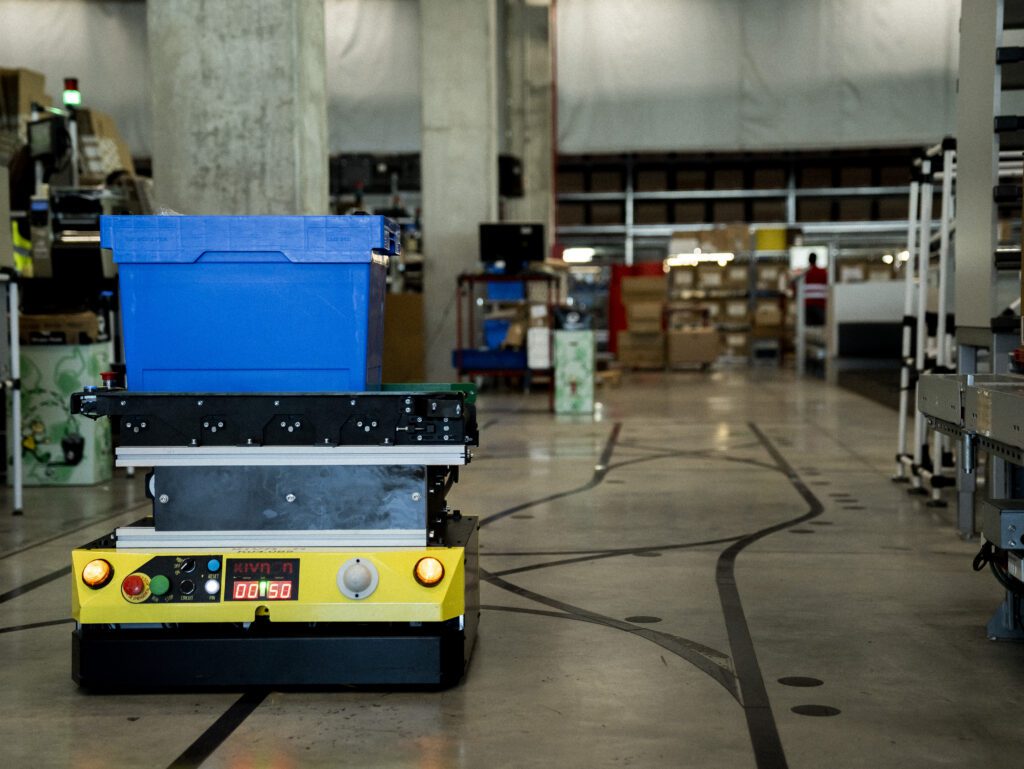NEWS | BY KIVNON
Reducing walking time by optimizing pickers’ routes can be accomplished by increasing pick speed and multiple picking orders

Driven by dramatic eCommerce upticks during COVID, there is no sign that automation in warehouses and logistics operations will slow anytime soon. Compounded by the Great Resignation, there are not enough hands to fulfil all the online orders. Consumer expectations are higher than ever, with same day delivery a requirement, and a four hour window preferred.
Reducing the walk time from dock to production (A → B) and production (assembly or kitting) back to the dock (B → A) for ongoing logistics transporting is a quantifiable metric for generating automation cost-justification.
The amount of labour costs embedded in walk time is extraordinary, especially for manufacturing and warehouse distribution centres operating three shifts a day. The main problem is that pickers can spend more than 70% of picking time simply walking around racks and rooms while looking for items. Reducing walking time by optimizing pickers’ routes can be accomplished by increasing pick speed and multiple picking orders. Automation minimizes the time required to pick items, thereby reducing walk time, and collecting items in the optimal route.
Since there is often highly repetitive nature of this back and forth facility product movement, boredom frequently sets in, and employee engagement evaporates. It is far better for raw materials to be transported to various work cells. Many warehouse managers have found success with integrating cellular manufacturing work cells to an operation because it brings equipment, people, and processes to a single location, achieving higher productivity and throughput.
Simplifying Workflows – Automation to Reduce Walk Time
Work should move freely from one workstation to the next, both within the cell and from cell to cell. Cells should be stationed in a linear order for a logical and consecutive flow, and operators should be able to move quickly and easily between machines when needed. This can happen in a fork truck free environment using industrial carts tugged or towed by comparatively inexpensive AGVs (automated guided vehicles).
Of late there is a trend to pack on artificial intelligence, machine learning, and other data collection technology on these AGVs. While “cool” and sexy, the truth is much of the functionality required is mundane and highly repetitive. A quick time study will measure the non-productive time of a manufacturing or warehouse labourer performing non-value added functions.
Logistics efficiencies, particularly those driven by an eCommerce model must be quantified by two constant metrics, zero defect picking and rate of accurate product turns. When the right product is properly picked and the product turns remain high, logistics are deemed most efficient.
Original post from Logistics Brew



















